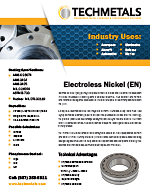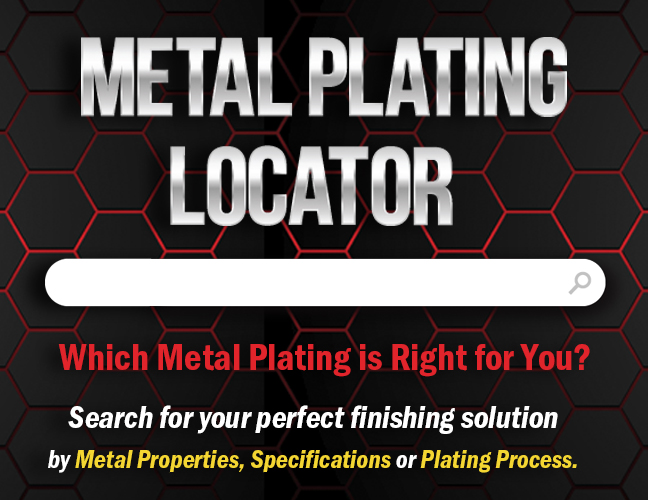Electroless Nickel Plating
Electroless Nickel plating (EN) is a process that uses a chemical reaction to co-deposit it’s Nickel-Phosphorus coating onto a desired substrate.
Comparatively, this solution differs from other electroplating processes because it does not require an electricity source to coat the part.

Also unique to Electroless Nickel plating is it’s uniformity, lubricity, solderability and highly corrosion resistance (depending upon the phosphorous content of the coating). Parts can be post hardened through baking to produce higher wear resistance than that of an as-plated condition. As a result, this combination makes electroless nickel plating one of the most popular coating processes — well suited for a wide variety of uses.
Additionally, the frictional characteristics of EN coatings are excellent. Their phosphorus content provides a natural lubricity, which helps to minimize heat buildup and reduces scoring and galling and which can be very useful for applications such as plastic molding. Also, the co-efficient of friction is one-half that of electroplated Watts nickel.
Benefits of Electroless Nickel:
- Corrosion resistance
- Uniform deposit (within +/- .0001-.0002)
- Lubricity
EN Industry Specs:
AMS-C-26074, AMS 2404, AMS 2405,
AMS 2454, ASTM-B-733, MIL-C-26074
Nuclear Specification: MIL-DTL-32119
Phosphorous Content:
High, Mid and Low
Electroless Nickel Properties:
TANK CAPACITY:
10′ Deep – up to 1 million pieces
WEIGHT CAPACITY:
Up to 10,000 lbs.
5-ton vertical lift
METHOD:
Rack or Barrel
POSSIBLE SUBSTRATE ALLOYS:
Ferrous, Non-Ferrous, Cuprous, Aluminum & Exotic
Techmetals Engineered Finishes (Electroless Nickel, EN)
TM103
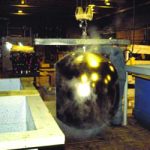 Electroless Nickel (EN) Plating at its best. Specifically, this process has a high phosphorus content, 9%+, and is free of heavy metal contaminants. TM103 is relatively pore and crack free as well.
Electroless Nickel (EN) Plating at its best. Specifically, this process has a high phosphorus content, 9%+, and is free of heavy metal contaminants. TM103 is relatively pore and crack free as well.
It has a uniform deposit (within +/- .0001 – .0002), which actually encapsulates the part and a hardness of 47-52 Rockwell as plated, heat treatable up to 65-70 Rockwell. Additionally, it’s coefficient of friction is 0.4μ.
What’s more amazing is TM103’s superior corrosion resistance to that of standard EN. One mil thick coating has shown no rust after 1,000 hours in a salt spray test.
In summary, this coating can obviously be used where corrosion resistance is of great importance.
TM104
Techmetals’ TM104 is a lead and cadmium-free, Electroless Nickel (EN), mid-phosphorus metal alloy (5-9%). It was developed to follow the requirements for the automotive end-of-life vehicle (ELV) initiatives and specifications for example.
Further benefits of TM104 include meeting the Waste Electrical and Electronic Equipment (WEEE) initiatives and Restriction of Hazardous Substances (RoHS) regulations.
With this in mind, this engineered EN coating is mostly utilized in industries such as aerospace, power generation, electronics, automotive and more.
TM117P
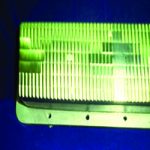 To explain TM117P, one will note the high phosphorus content (9%+) in this engineered Electroless Nickel (EN). Another key benefit is it’s ability to be hardened to 64 to 70 Rockwell C and post applied with PTFE.
To explain TM117P, one will note the high phosphorus content (9%+) in this engineered Electroless Nickel (EN). Another key benefit is it’s ability to be hardened to 64 to 70 Rockwell C and post applied with PTFE.
This coating provides a very accurate, dry lubricated hard surface. It has excellent resistance to adhesive wear, with great release properties.
Therefore, TM117P is commonly used on mold surfaces for both plastic and rubber applications, food processing equipment, computer components, aerospace applications and more.
TM117C
 Similarly, TM117C is a high phosphorus (9%+) Electroless Nickel (EN), that is codeposited with PTFE.
Similarly, TM117C is a high phosphorus (9%+) Electroless Nickel (EN), that is codeposited with PTFE.
As shown with TM117P, this coating provides a very accurate, dry lubricated hard surface. It has excellent resistance to adhesive wear, with great release properties.
For that reason, TM117C is traditionally used on mold surfaces for both plastic and rubber applications, food processing equipment, computer components, aerospace applications and more.
TM129
A low phosphorus (0 – 4.5%), high hardness, Electroless Nickel (EN) that is 55 to 60 Rockwell C as plated.
Also, this uniform deposit is used on aluminum and “even” tempered alloys for hardness. Its corrosion resistance is outstanding in alkaline atmospheres.
With this in mind, our TM129 coating is widely used in the tool and die industry on molds, plungers and other tooling.
TM133
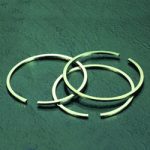 Unlike other electroless nickel coatings, TM133 with the included Boron, has low internal stress. This coating is uniform and has excellent wear resistance.
Unlike other electroless nickel coatings, TM133 with the included Boron, has low internal stress. This coating is uniform and has excellent wear resistance.
In addition, it has good solderability, weldability and excellent wear resistance — with a hardness of 63-65 Rockwell C as plated and heat treatable to 1200-1300 KNH 100, approximately (80 Rockwell C).
What’s more is Techmetals’ Nickel Boron has a much lower coefficient of friction than chrome. This deposit is often used to replace hard chrome, carbide and even titanium nitride.
E-Krome
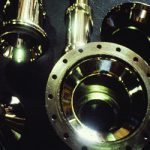 To clarify, E-Krome is a uniform electroless process, 60-65 Rockwell as plated. We think of it as electroless chrome.
To clarify, E-Krome is a uniform electroless process, 60-65 Rockwell as plated. We think of it as electroless chrome.
It has the color, hardness and low coefficient of friction similar to chrome. Also, E-Krome has the ability to cover uniformly over complex geometries without the use of electricity, thieves, robbers or shields.
Basically, this coating helps to alleviate environmental concerns around the use of hexavalent chromium.
UltraKoat
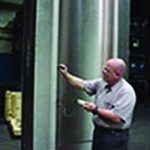 Without a doubt, UltraKoat is one of Techmetals’ finest engineered coatings. Chiefly an Electroless Nickel (EN) co-deposit with sub-micron particles of a diamond like material, this deposit has a very low coefficient of friction. UltraKoat can also be used in applications over 500 degrees F, where PTFE starts to decompose.
Without a doubt, UltraKoat is one of Techmetals’ finest engineered coatings. Chiefly an Electroless Nickel (EN) co-deposit with sub-micron particles of a diamond like material, this deposit has a very low coefficient of friction. UltraKoat can also be used in applications over 500 degrees F, where PTFE starts to decompose.
The diamond like particles and low coefficient of friction give this coating the ability to perform well in sliding, wear and abrasive applications for example.
UltraKoat is NOT recommended for fluid wear.

